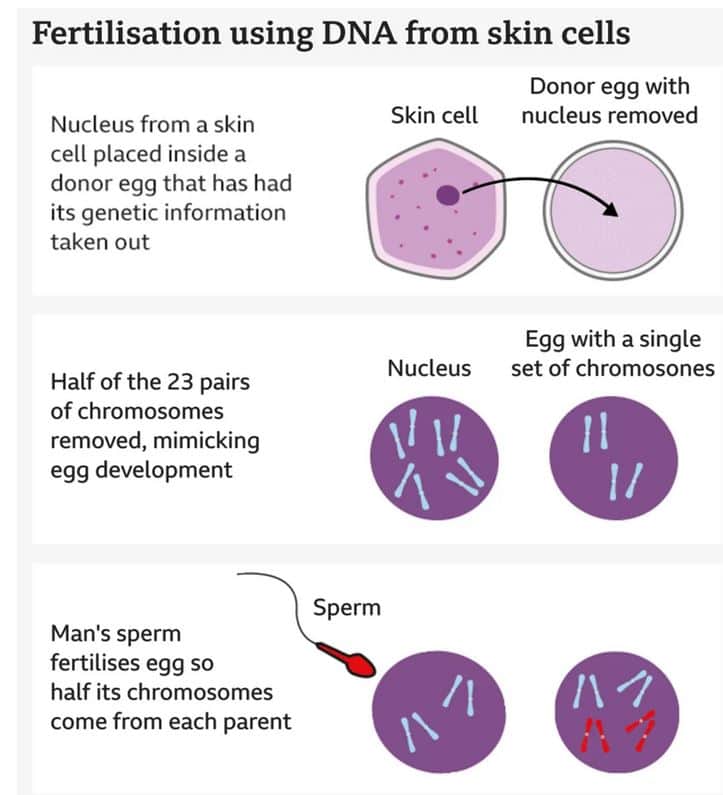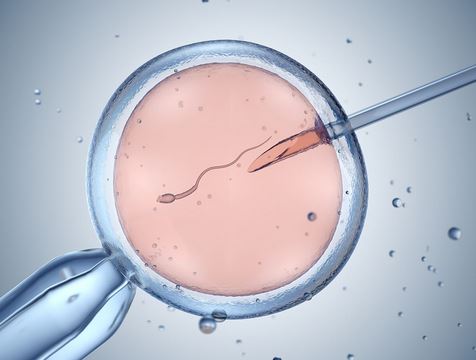Scientists have successfully created early-stage human embryos by using DNA from human skin cells combined with sperm.
The breakthrough could one day help treat infertility caused by age or disease, as it may allow researchers to generate embryos from nearly any type of body cell.
It may even allow couples of the same sex to have children genetically related to both partners.
While the method is still in its early stages and requires major refinement before it could ever be used clinically, researchers says it’s a massive breakthrough

The team at Oregon Health and Science University removed the nucleus – the part of the cell containing the complete genetic code – from a skin cell.
The nucleus was then inserted into a donor egg that had been emptied of its original DNA.
This approach resembles the method used in 1996 to produce Dolly the sheep, the first mammal ever cloned.
However, unlike cloning, the modified egg cannot be fertilized with sperm, since it already contains a full set of chromosomes.
The next phase of the study will focus on getting the egg to remove 50 percent of its chromosomes.
Published in Nature Communications, the research successfully generated 82 eggs, which were then fertilized with sperm.
Some of these developed into early-stage embryos, though none grew beyond six days.
Professor Shoukhrat Mitalipov, a leading pioneer in the field who worked on the study, said the team achieved something “once thought to be impossible.”

For now, the technique remains in its infancy, as the egg discards chromosomes at random. To avoid genetic disease, it must retain exactly one copy of each chromosome.
Vitro Gametogenesis
The new technique is part of a growing field known as in vitro gametogenesis, which focuses on creating eggs and sperm outside the human body.
While the approach is still far from being ready for clinical use, the ultimate goal is to help couples who cannot undergo in-vitro fertilization because they lack viable eggs or sperm.

Professor Roger Sturmey, a reproductive medicine specialist at the University of Hull, praised the study as both “impressive” and “significant.”
Professor Richard Anderson, deputy director of reproductive health at the University of Edinburgh, described the creation of new eggs as “a major breakthrough.”
While safety issues remain, researchers say the findings mark an important step toward allowing more people the chance to have genetically related children.








